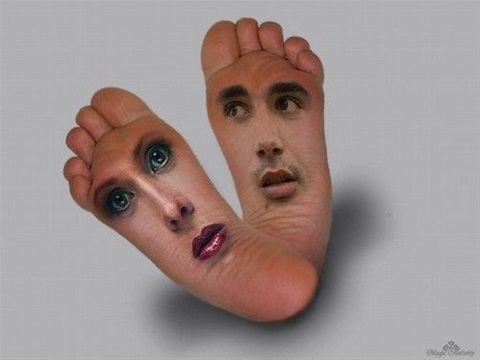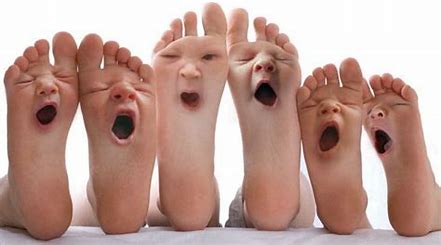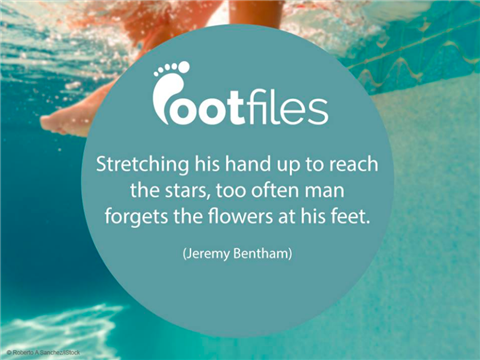PUT YOUR BEST FOOT FORWARD
These little or large plates of meat (feet), trotters, tootsies, dogs, hooves, whatever you refer to our digits situated at the end of the lower extremity of the leg below the ankle, on which we stand or walk, they are probably the last part of our body we think about; until they start to hurt!
It's easy to take our feet for granted. They're just there, putting up with a host of daily challenges, from being jammed into high heels getting elevated to unnatural heights to being smothered inside sweaty socks or very tight tights.
But plese note they are too important to simply overlook, let’s not forget they are the workhorses of our bodies, so why do we ignore them and give them so little respect.
Both feet (combined) make up for 25% of the body’s bones, 18% of joints and 6% of the muscles. With some 26 bones and a complex framework of muscles, tendons and ligaments, just during an average day of walking, our feet absorb the impact of your full body weight with every step, keeping us balanced and upright in the process.
That sort of pounding explains why feet are the body part most likely to get injured, but the good news is you don't need to spend a fortune or masses of time out to take care of your feet. By spending just a few minutes a day on foot care and choosing the right shoes can keep you free of problems.
The problems that can afflict your feet are numerous. Smelly feet, cracked skin, fallen arches, corns, ingrown toenails, fungal infections and even damaged bones. While some of these problems are congenital, you can avoid many of them with a little TLC.
Also, as we age all of these problems tend to get worse.
Caring for your feet doesn’t have to be a taxing job; in fact, it can be quite a nice one and make you feel relaxed and pampered. There are some key things you need to do, though, to make sure your feet are in their best condition.
Keep your feet clean and dry
As with any part of your body, healthy feet start with good hygiene. While bathing, thoroughly clean your feet with soap and water. Be sure to fully dry them, especially between each toe, as fungal organisms love moisture. Keeping your feet dry helps to lower the possibility of a fungal infection.
Examine your feet regularly
Take the time to examine your feet at least once a week. Check in between your toes and around your soles for scaling and/or peeling which is often an indication of athlete’s foot.
Be sure to look for cuts, blisters, scratches, redness and swelling as catching these issues early can prevent serious complications later. Also, check for any discoloration of the toenails, which often indicates a nail fungus. Avoid putting any nail polish on an infected nail as this could possibly make the problem worse.
Cut your nails regularly
Surprisingly, many of the problems people have with their feet starts with their nails. If you get an infection, it can be difficult to treat.
Remove hard skin
Hard skin may look harmless and for the most part, it is, but over time it can build up and get thicker and thicker. When that happens it becomes painful, which affects your gait. Not walking or running properly will lead to problems with your knees, hip and back.
Wear the proper footwear
Wearing the wrong shoes can lead to potential foot problems such as plantar fasciitis, arch spasms, heel spurs and tendinitis. When shopping for shoes, try to shop at the end of the day to compensate for foot swelling that may occur throughout the day. Wearing tight shoes can result in long-term foot problems, so ensure that you are purchasing shoes that have plenty of room for your toes and a wide heel. Never walk barefoot, as shoes and slippers are the simplest way to protect your foot from bumps and bruises.
Just remember its healthy to have happy feet!
.







